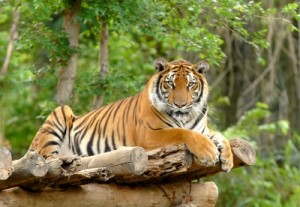One of the books for my course in Native American Spirituality at AIHT is Ed McGaa, Eagle Man’s book, Nature’s Way – Native Wisdom for Living in Balance with the Earth. Each chapter uses an animal in nature to illustrate the author’s point, which is that we must learn from what the animals and the rest of nature have to teach us, if we are to survive the destruction which we have already caused to our planet.
The chapter I am currently studying is entitled Strive For Freedom – Lesson of Tiger.
The chapter starts thus:
“What is an animal’s or human’s deepest desire? We will neglect food or shelter to acquire it. It is freedom.
The Bengal tiger is a prime example of freedom.”
As some of you may already know, one of my power animals is Anunya, the tiger, who I talk about in a previous blog.
http://www.lorelletaylor.com/meeting-your-power-animal/
When the subject of animal spirit guides and power animals was raised this week in a facebook group that I belong to, I knew that Anunya was trying to attract my attention to write my blog this week about the Lesson of Tiger.
Ed McGaa writes that the Native Americans of the north considered themselves to be born free and didn’t countenance slavery. Our European ancestors, on the other hand, embraced slavery, and it has only been in recent years that slavery, in all its forms, has been fading from existence. (Long after slavery officially ended, many workers were employed in slave-like conditions.)
Our ancestors’ attitude to those beings who they considered inferior led, not only to the enslavement of humans, but to the enslavement of animals as well.
They took animals from the wild and put them in zoos and circuses, for their amusement. Even humans who appeared abnormal were, at one time, paraded in circuses as novelty acts.
Animals who once roamed freely, such as pigs, cattle, sheep, and goats, were fenced off and became domesticated.
Although it has been stated that many ancient Native American societies were vegetarian, I believe that those who weren’t communicated with their prey telepathically, with the hunter asking permission and giving thanks, and the prey giving of its life freely.
Although domesticated prey animals never achieved that same level of intimacy with their European owners, I have no doubt that, during their shortened lives before slaughter, most animals were treated with respect.
As animal farming moved from subsistence farming to commercial farming to industrial farming, the animals increasingly became commodities, rather than beings, albeit inferior ones.
As commodities, the only thing that mattered was to produce more, for less money. If we could reduce the costs of production, we could lower the costs to consumers, thereby increasing demand for our products.
We began a system of factory farming, where animals are denied their natural diets and their natural behaviours. We manipulated their breeding. Without using anaesthetic, we cut off body parts that would cause us difficulties. We started feeding them all manner of crap (literally), as long as it was cheap. We introduced antibiotics and other chemicals into their food to promote growth and increase the output. We shipped dairy cows’ babies off to the abattoirs in the first days of their lives, so that we could have their mothers’ milk in our tea.
We couldn’t see the being that was cow, or pig, or lamb; we could only see the dollars that we could make from the products they became. We caused these animals to suffer horrific lives and horrific deaths.
As consumers, we were now consuming, not only antibiotics and other chemicals along with our meat, we were also consuming the pain and suffering which each of these animals stored in their bodies.
As subsistence farmers, we lived with the animals, prior to their slaughter; we knew that what was now our steak had once been our young bull, that what was now our bacon, had once been a pig we saw every day. Now, we are so far removed from the food that we eat, we rarely even consider that it once breathed and suffered, let alone give thanks for the nutrition that it has brought to us.
Once we had lost sight of the being within these animals, we had no qualms about packing them into trucks for long road voyages, or into ships for long sea voyages. As long as the trade was still economically viable, we thought little of the individual animals who suffered intolerable conditions on board.
It seems that we had not come so far from the slave trade after all.
How many of us have stopped to consider the similarities between the slave trade of the 15th to 19th centuries, and the animal industries of today?
There is an obvious similarity between the slave ships of those days and the live animal transport ships of today, as I mentioned in my earlier blog:
http://www.lorelletaylor.com/amazing-grace/
However, it is only if we turned a blind eye that we can fail to also see the similarities between the way we treated slaves, and the way we currently treat our food-producing animals.
The main similarity is the one which Anunya brought to my attention. We denied them the deepest desire of all sentient beings. We denied them their freedom.
Be a voice for animals at AnimalsAustralia.org
https://www.youtube.com/watch?v=pX6Wegv6qv0&app=desktop
http://www.udel.edu/chem/C465/senior/fall97/feed/present.html
http://nourishedmagazine.com.au/blog/articles/why-not-to-eat-grain-fed-meat
Image courtesy of anankkml at FreeDigitalPhotos.net


Leave A Comment